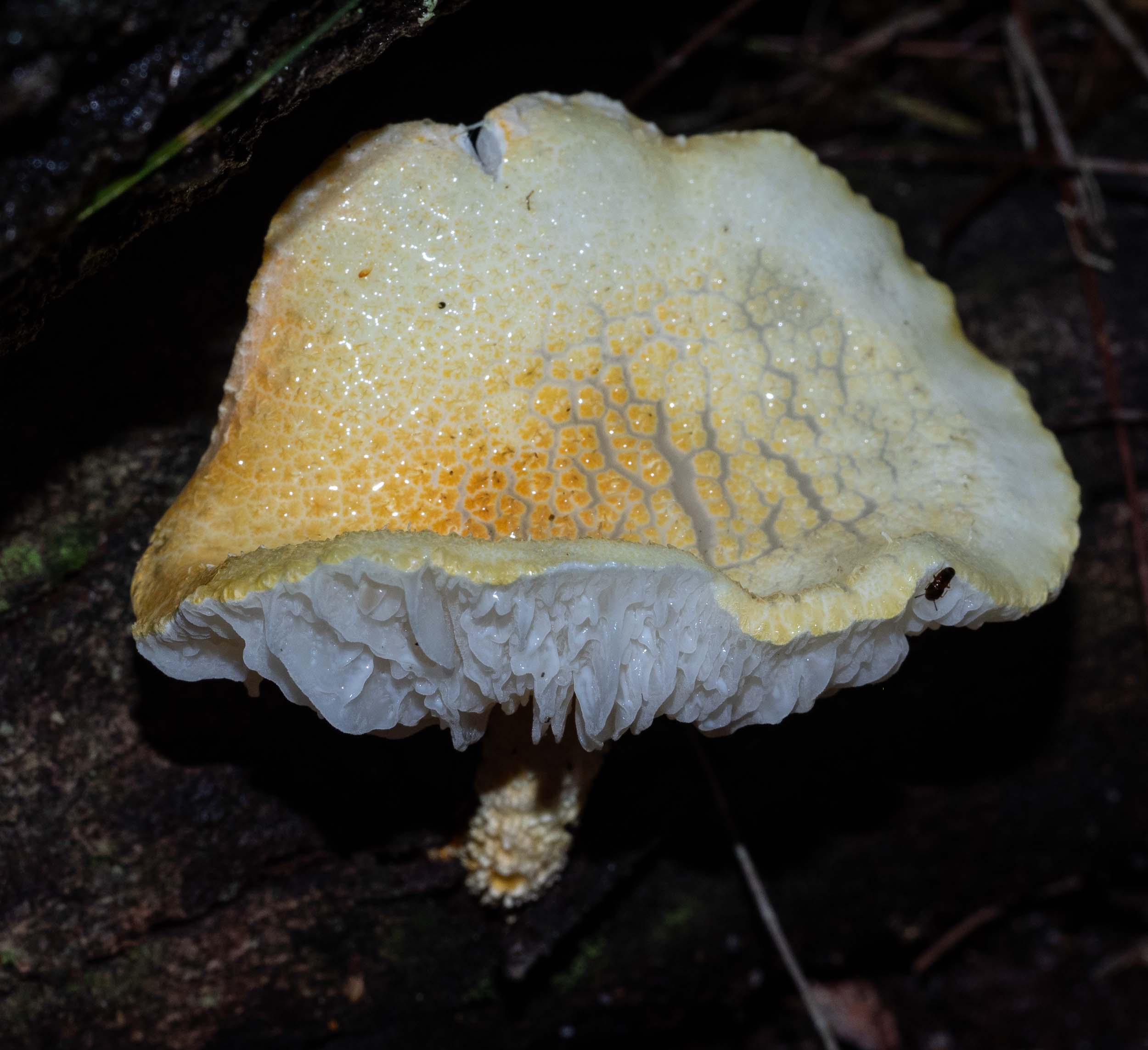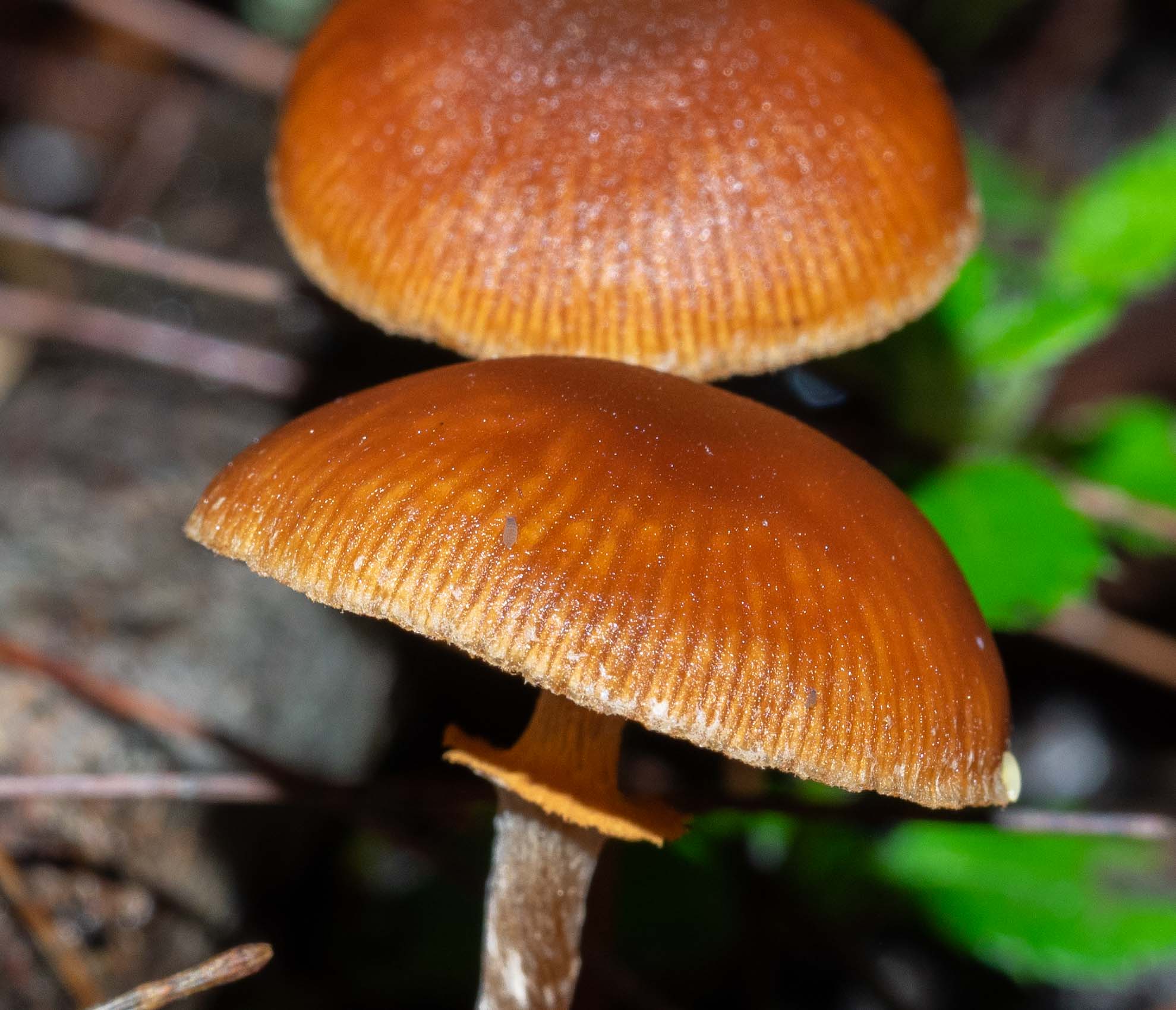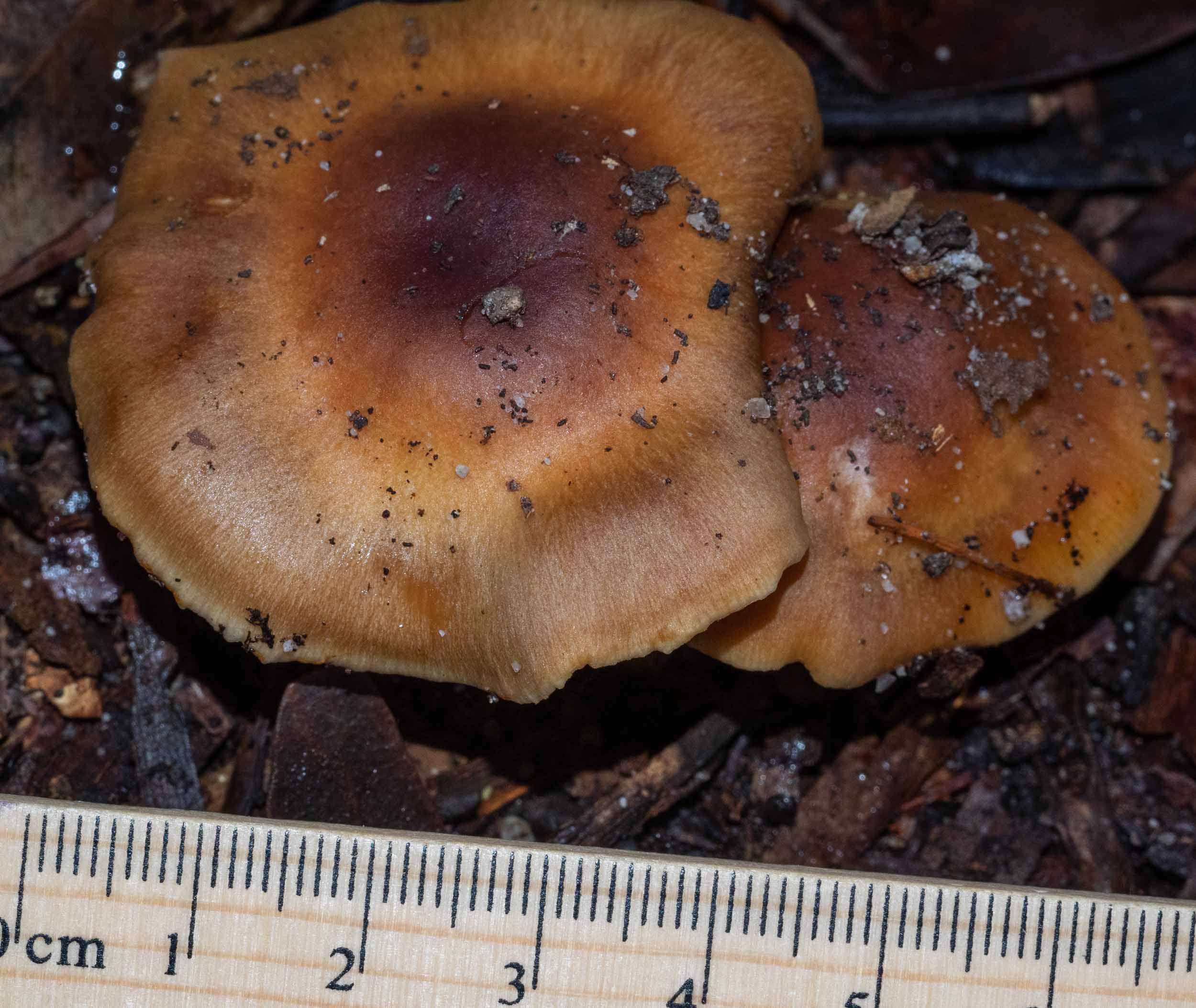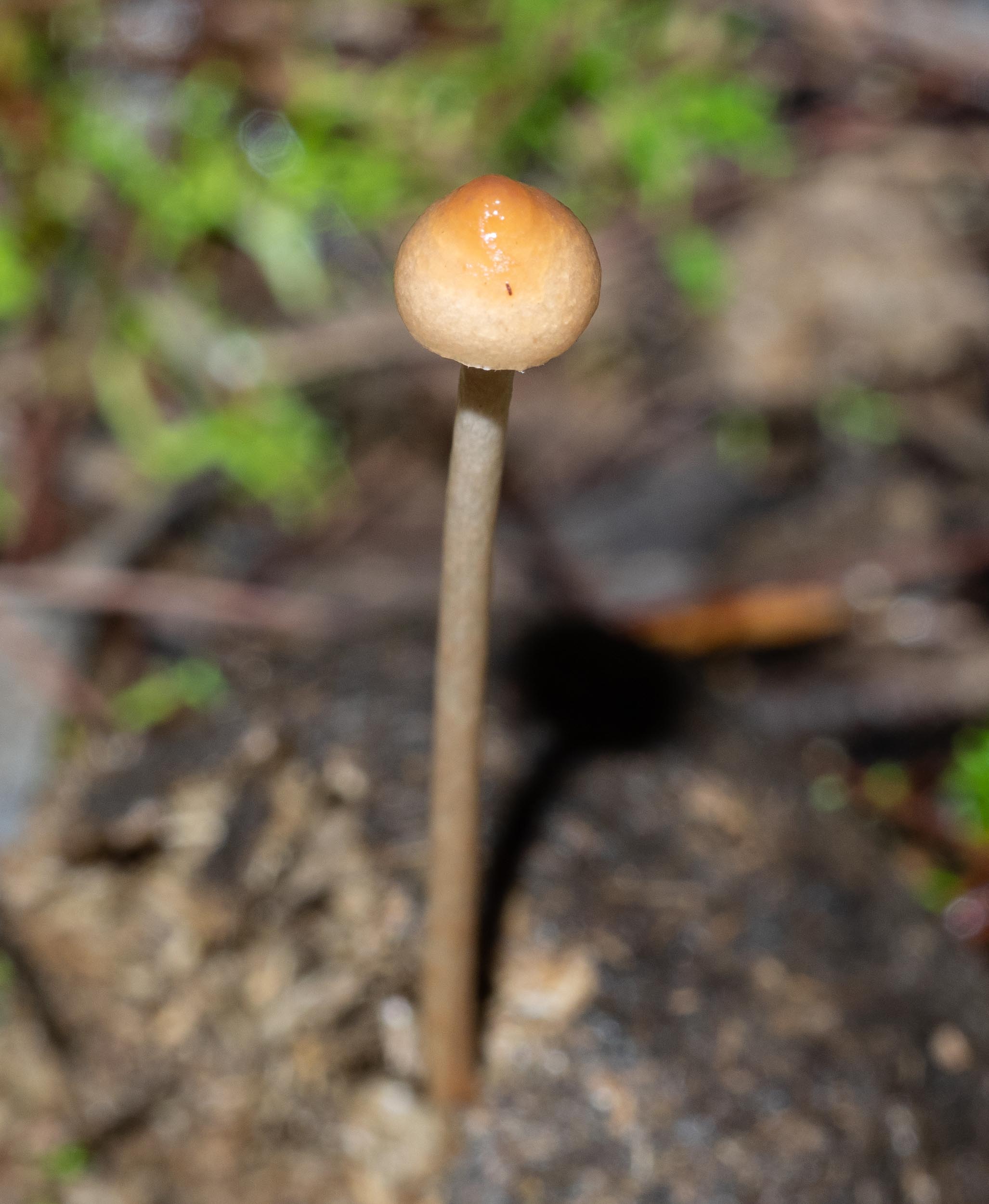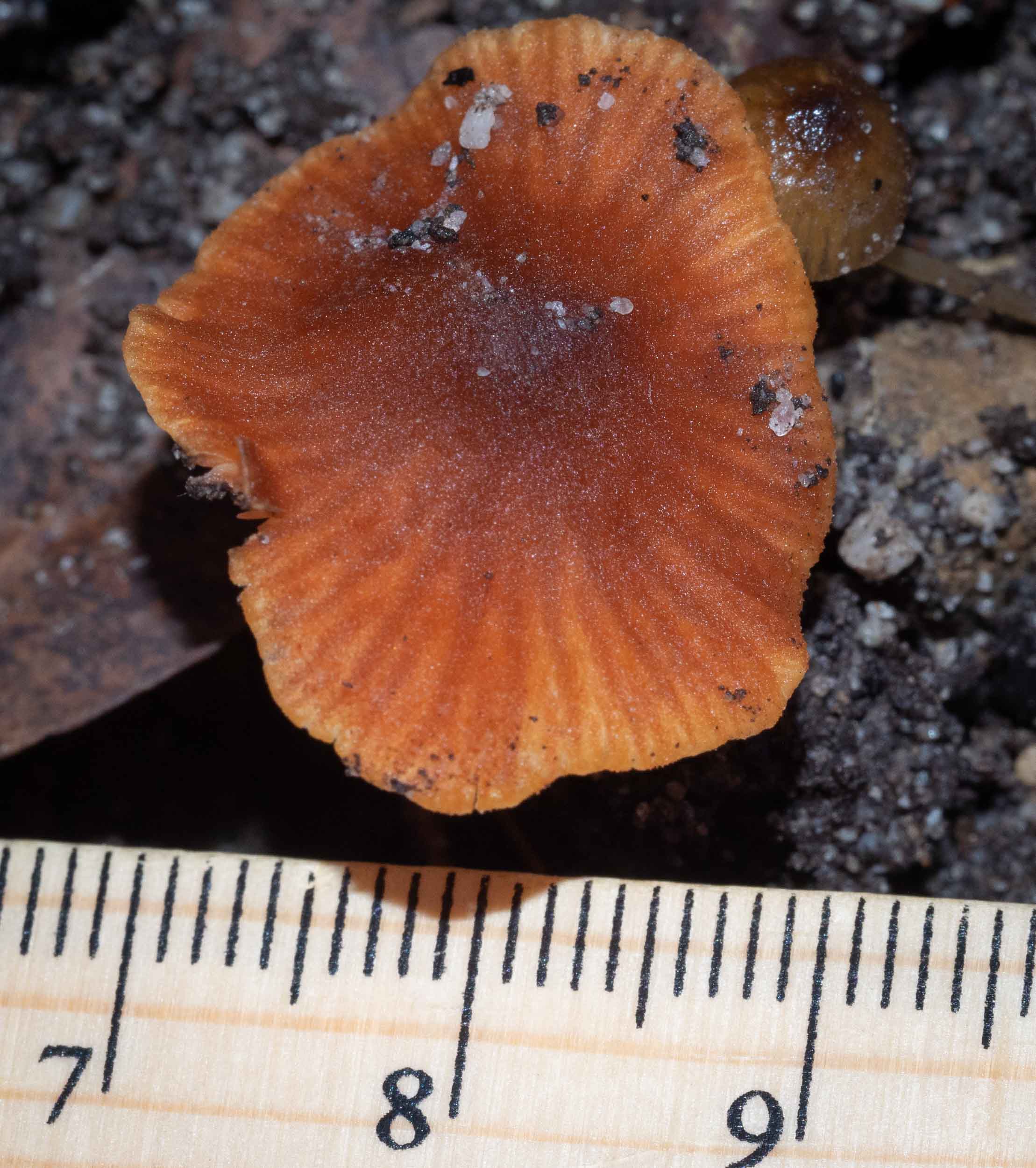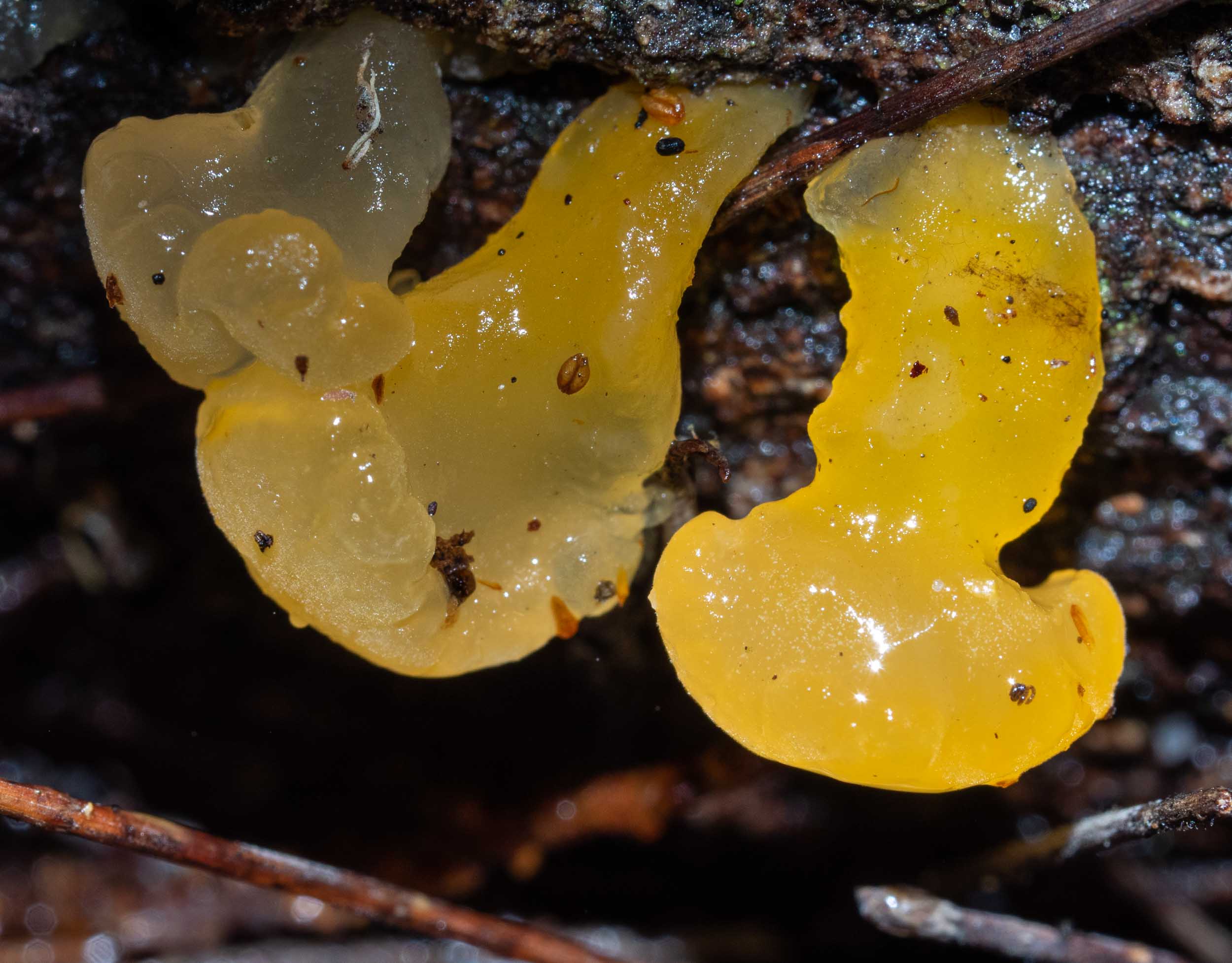Fungi features for identification
SPECIAL FEATURE
Fungi are an ever-present part of our environment, yet they largely go unnoticed until they form a large or colourful fruiting body.
Mushrooms, puffballs, stinkhorns, brackets, jellies, and leathers ... they're all common names for the fruiting bodies of various fungal species. And there are a lot of species! There an estimated 10,000 species in Australia, and only about a third of them have been identified scientifically.
In many ways, fungi are perfect for recording biodiversity ...
Fungi are quite easy to photograph and document.
They are diverse, yet identifiable (at least to major group or genus level).
And you don't see them year-round – so it's worth recording every 'new' and different one that you come across.
Here are a few tips on how best to record your fungi sightings. Good data helps with identification, and it also ensures that your NatureMapr records are of value to researchers in the future.
Tips on what to record
1: Take photos from various angles
2: What is it growing on?
3: What else did you notice?
The Sniff Test: many mushrooms just smell, well, 'mushroomy'. But some have quite a sweet, sharp, bleach-like, or rather disgusting smell. Take a note of any odour, as smell can be a useful identifier. Pinch a small piece of gill, squash it, then sniff. Squashing reduces the risk of inhaling spores, which may be allergenic or even quite dangerous, in some species.
The Scratch Test: some mushrooms, particularly the large ones such as the boletes, turn blue when bruised. Again, this can provide a valuable clue to identification. Make a scratch across the gills/pores and down the stem, or break off a piece of the cap, and see what happens. In some boletes, you may even have to cut the cap in half. Take note of any colour changes.
4: What size is it?
5. Spore colour?
If you're feeling keen, consider making a spore print. The colour of the spores is a clue to identification.
Taking a spore print is really not that difficult. Most mature fungi release spores quite readily.
But "think before you pick" ...
Where are you? Don't collect from flora reserves or protected areas, or even private land unless you have permission.
Might it be rare? If this is the only one around – perhaps the only one you've ever seen! – best to leave it where it is.
A useful trick with spore prints is to use glass rather than paper ... that way you can easily change the background colour. White spores are rather difficult to see on white paper, yet black paper is not always the answer as some fungi have nearly black spores.
6: Finally, beware the age trap
For most of us, this trap is rather unavoidable. Fungi can change rather dramatically as they age, and so we can all be fooled. A single specimen might be very young, very old, diseased, or just a bit 'unique', and so fail to show the typical features used to identify the species.
So ... which ones to document and which to ignore? Below are two examples of species variation, followed by a few suggestions:
Example 1: Cyptotrama asprata
'Golden Scruffy Collybia' is particularly eye-catching when young. In low light, the tiny spheres and immature caps almost seem to glow orange. This is quite a common fungus, with an almost global distribution. In this example, all except the aged specimen are recognisable, but the immature stage is the most commonly photographed and featured in field guides.
Example 2: Hypholoma fasiculare
'Sulfur tuft' is a common species. Here it is growing on buried, dead tree roots. These images were all taken within a few square metres. Both young and mature caps are quite recognisable. It's the ageing and decaying ones that are more difficult. In all cases, however, the gills look greenish-yellow ... 'sulfur coloured' ... a useful clue.
Here are the tricks I use to select specimens that are both representative and identifiable:
Look for 'healthy' specimens. A mushy mushroom is probably way past the point at which it can be identified. And many fungi get attacked by other fungi as they decay, often resulting in some very weird looking specimens.
Look about nearby for other examples of (apparently) the same species. Of course, this can be a trap in itself. Take the two jellies in the images below. They were growing just a few centimetres apart and at first I assumed they were the same species. Turns out that they're not.
Look again tomorrow ... and perhaps the next day. If I spot a particularly interesting, single, young fungus, I try to watch (and photograph) it over several days. If I'm lucky, it escapes the attention of hungry wallabies until it matures.
Prepared by Kerri-Lee Harris (naturalist, but not expert mycologist!) - 18th June 2018
All images taken June 2018, in Wonboyn, NSW


